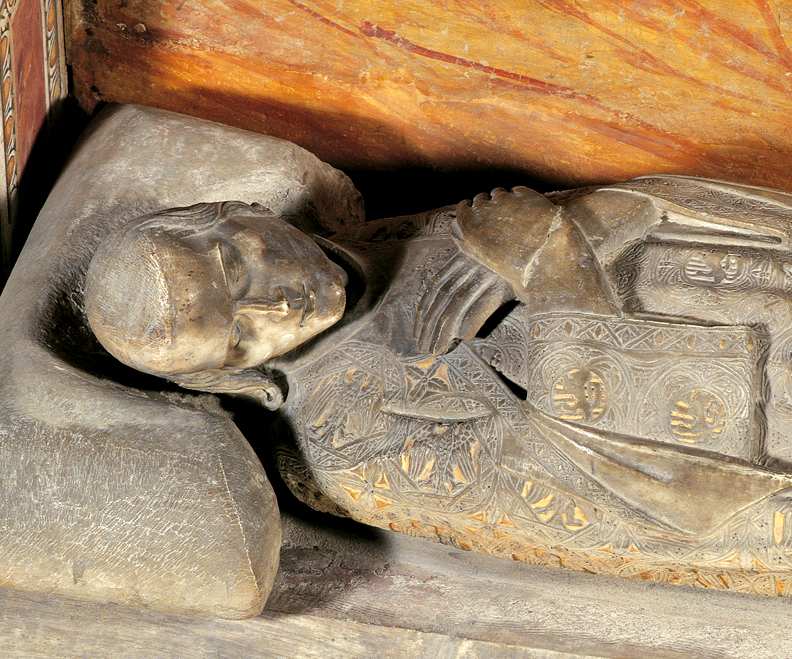The tomb of Henry VII in Pisa has revealed a fabulous 14th century silken shroud worked with lions …
Henry VII of Luxemburg (1275 – 1313) was the son of a rather insignificant count of Luxemburg and raised at the French court. During his youth he agreed to become the vassal of the French king and few believed he was destined for something more. Nevertheless in 1308 he became embroiled in the political machinations, which followed upon the assassination of the German King Albert. When an infight broke out between the two contenders – Charles of Valois and Rudolf, the Count Palatine – Henry was elected as a compromise. In January he was crowned king in Aachen and in 1309 the pope – residing in Avignon – confirmed his election and promised to crown him emperor. After much politicking to and fro Henry began his descent into Northern Italy in October 1310.

Here he met with a hot mixture of support and armed opposition resulting in continuous negotiations, sieges and downright warring. In 1311 he was crowned king of Italy in Milan but it took nearly one and a half year before he achieved his imperial coronation in Rome – in the Lateran and performed by cardinals since the king of Naples held St. Peter and Castel san Angelo and the Pope resided in Avignon. A few months later and back in Pisa, where he had his base, he began to plan a war against Naples. Unfortunately he died of Malaria near Siena a few weeks after he had embarked upon this venture; from here he was taken back to Pisa and buried. Of him Dante famously declared (in the Paradiso) that it was “he who came to reform Italy, before she was ready for it”. (Par. xxx, 137-8).
In Pisa a sarcophagus was created by Tino di Camaiano who was a pupil of Pisano, while his brother commisoned a chronicle, Codex Balduini Trevirensis with a series of interesting illuminations describing his Italian campaign and the good people of Pisa lamented their loss of the massive funding he had used up on his way to glory. Later the tomb was dismantled and moved and nobly thought there might be anything interesting left in the coffin.

Wikipedia
This week a conference was organized in Pisa in commemoration of his death 700 years ago and at the same time it was announced that his tomb had been opened and had revealed a treasure trove of extraordinary objects. These include a large silk cloth worked with the imperial lions and pink and blue ribbons measuring 3 x 1.20 meters, a sceptre, an imperial crown and a globe. Apart from his physical remains the objects are claimed to be of extraordinary value. Especially the silken shroud is said to be extremely important not only because of its size, but also the vibrant colours.
So far, the only photo available is a mobile snap shot
SOURCE:
